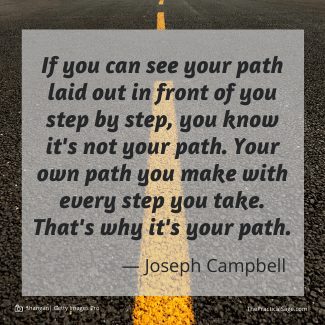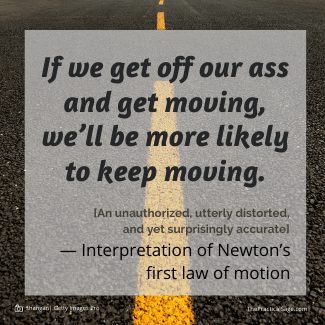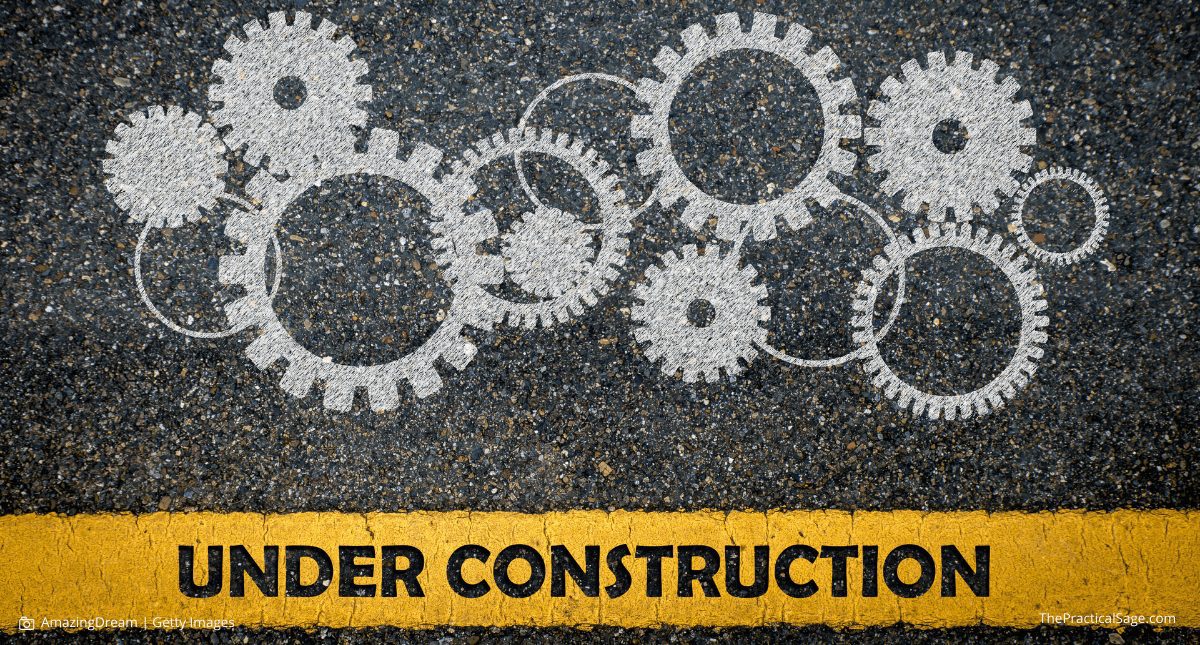
How do we navigate a path that doesn’t exist? At least, doesn’t exist yet. We know how to follow a well-worn route. In school, we had specific course requirements, and within each course there was a neatly outlined syllabus: read these books, do these assignments, take these exams, and become an engineer, accountant, physician, dentist, etc. Once we’ve chosen a career, there are additional paths to pursue, corporate ladders to climb, and footsteps in which to follow. These paths are not easy, but at least they’re clearly marked. That’s the first building block to your path.
Some people seem to have always known what they wanted to do in life. They found their path early, and they stuck with it. Others, like myself (and I’m assuming some of you) also found a path and followed it, but then ultimately just felt “stuck.” What do we do when we reach a point in our journey where the path is not clear, or there may not appear to be any path at all? Getting stuck can be painful, but it doesn’t have to be permanent.
Navigation – Our Internal Compass
When we feel stuck our first instinct is often to look outside ourselves for solutions, or at least for something better: a better job, better company, better relationship, etc. We may expend a lot of energy throwing the proverbial spaghetti against a wall to find anything that will “unstick” us. However, there’s a more strategic and tailored approach. There may not be an obvious path, but we have an internal compass to help us navigate the way forward.
Last month, we talked about breaking things down into our fundamental building blocks of what’s most important to us: our values, strengths, interests, and motivations (see Best, Worst, & Better exercise). We can use this core information as a compass to guide us toward options that are better suited to us, and then use it as criteria to evaluate and decide between those options. Getting clear on what’s important to us first is a good way to start getting unstuck.
For example, I’ve been feeling “stuck” for a couple weeks on writing this blog post. –Don’t you just love irony? On the other hand, maybe this is a just-in-time opportunity: How do I get unstuck? (I’m as anxious to find out as you are.)
Create a “Good Enough” Vision
We can start by asking, “What does success look like?” In my example of writing this blog post, my first (and snarkiest) response would be, “a Pulitzer” (Special Citations & Awards category). Now that I’ve set the bar so high that I can’t even begin to see a path forward, let’s readjust.
A vision for success doesn’t have to be “perfect.” In fact, it won’t be. So, we need to let that go. Letting go of perfection doesn’t mean aiming for mediocrity. It just means releasing our creativity from overly rigid expectations to explore and experiment. Our vision just has to be “good enough” to get us moving in a specific direction. So, let’s try this again:
Reflection Question: “What does success look like?”
My Response: “A clear, practical (hopefully somewhat humorous ) blog post about how to find an authentic way forward when there is not a well-defined path.” –Good enough!

Play with Our Building Blocks
Going back to our building block exercise (above), what are a few of the blocks we want to play with in building our path? Not EVERY building block, but just two or three. We already have a lot going on, and trying to juggle even more information on top of that can become unmanageable. So instead, we cut through the noise and prioritize. Ask, “Which building block do I want to play with first?”
My three go-to building blocks with these posts are usually the following:
- My interest in making them humorous, even if I’m the only one who thinks they’re funny.
- My value of transparency and my strength in using my own experience, struggles, and learning as fodder for thought.
- My motivation to offer practical tips to help people take action.
Your building blocks may be entirely different. In fact, my building blocks may be entirely different in a different situation. For example, humor may (or may not) be appreciated in a blog post, but I find it’s rarely appreciated by international immigration and customs agents while I fumble to find my passport.
We can use the previous “Best, Worst, & Better” exercise to identify some of our initial building blocks, or if we already know our building blocks, then we can just ask ourselves:
- Where am I stuck?
- What’s at least one thing I will do differently today to get unstuck?
- What will help me be accountable? (e.g., Who can I tell? or What support do I need?)
Basically, we need to find a place to start to explore and experiment that is aligned with who we are and what’s important to us:
Self-Reflection Question: “What are a few blocks I want to play with first?”
My Response: “Humor, transparency, and practical tips.”

Get Moving
We only get “unstuck” when we’re willing to take action. I’m on version eight or nine of this blog post, not counting a few major detours and rewrites. But that’s okay. Exploring and experimenting is part of the “unsticking” process. We have to start somewhere.
This may sound like we’re back to throwing spaghetti against a wall, but there is one big difference. This time, we started by identifying the fundamental building blocks of what’s most important to us, and then intentionally using those blocks to start building our path forward. We’re not randomly trying anything and everything, grasping at the first alternative that comes our way. That’s not building a path. That’s just stumbling around in the dark, and it often leads to more stuckness. Instead, we’re building from the core of who we are and what we want to achieve. As a result, whatever building block we use to create whatever path we build will be more authentic and, therefore, much more likely to lead us to what we really want. We often won’t get it right the first time, but when we lead from our core, even the detours are meaningful. We need every single building block.
Once we know the direction we want to go, getting started can still be difficult. It’s simple physics, really. Newton’s first law of motion states—
“An object at rest stays at rest and an object in motion stays in motion with the same speed and in the same direction unless acted upon by an unbalanced force.”
My practical interpretation of Newton’s law is this: It’s hard to get started, but if we get off our ass and get moving, we’ll be more likely to keep moving.
Action Item: Get off ass and get moving.
My response: Wrote >8 versions of blog post + drank 14 grande lattes + ate 3 petite vanilla scones. – You tap creativity your way, and I’ll tap it mine.
Detours & Exit Ramps
The “road not yet built” is not linear. Detours are not only some of the most interesting parts of the journey, but they can yield very useful outcomes. For example, one of my many detours in this blog-writing process led me to my topic for next month’s post.

Beyond the detours, we also have to recognize when we need to step back, let go, and build an exit ramp from our current path. Knowing the right time to exit from the road we’ve planned (even if not yet built) is more art than science, and not something anyone else can easily tell us.
We often know it’s time to exit our current path long before we’re ready to accept it. This is especially true when we’re highly invested in a particular part of our journey or a specific destination. I found it hard to change direction even on this little blog post. Think how much more challenging it is for us to build an exit ramp from a career, a relationship, or something else that’s been intricately woven into the fabric of our lives but no longer serves us.
When we consider building an exit ramp, we may look back on the long stretch of road we’ve already built and worry all our hard work will be lost and our time wasted. I see it differently. All our travels shape our journey and inform who we become. At times, we may be on a road because it’s a direct path to our ultimate destination. Other times, it’s specifically because we traveled that stretch of road that we finally realized we needed to reorient our path toward a new destination.
Always Under Construction
We build our road as we go. There is no perfect path, and there will always be tradeoffs to the routes we choose. When we tap our internal compass to navigate uncharted terrain, we leverage our core building materials to create an authentic path. If we’re lucky, we’ll encounter detours that are both scenic and productive, and we’ll recognize the signs when it’s time to exit a stretch of road to better serve our overall journey. Our life is always under construction, and we are the only ones who can build the road forward.

